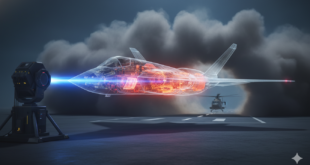Heavy Lift rockets are the backbone of space exploration, defense, and commercial satellite deployment. These formidable launch vehicles are capable of carrying large payloads into orbit or beyond, providing critical capabilities for national security, scientific exploration, and commercial ventures. The global space race has intensified in recent years, with significant advances being made by both state-run space agencies in countries like the United States, Russia, and China, as well as private companies like SpaceX. In this article, we explore the strategic impact of heavy rockets and the key innovations introduced by various nations and commercial entities.
The Strategic Importance of Heavy Lift Rockets
Heavy rockets play a crucial role in multiple areas, including national defense, space exploration, and global communication. Their strategic impact is profound:
National Security: Heavy rockets are instrumental in deploying military satellites that provide vital intelligence, surveillance, and reconnaissance (ISR) capabilities. These satellites enable real-time communication, navigation, and weather monitoring, which are indispensable for defense operations. Additionally, heavy rockets can launch defense payloads, including missile defense systems, into space, offering a strategic edge in military preparedness.
Space Exploration: For scientific missions to the Moon, Mars, and beyond, heavy rockets are the go-to solution. Their large payload capacity makes it possible to transport the required instruments, spacecraft, and crew needed for deep space exploration. These rockets also serve as the platform for launching space telescopes, probes, and rovers that increase our understanding of the universe.
Global Communication and Commercialization: Heavy rockets are used to launch communication satellites, which provide critical connectivity for telecommunications, weather forecasting, and internet access, especially in remote or underserved areas. With the increasing commercialization of space, these rockets facilitate the growing demand for satellite launches, enabling the global expansion of broadband internet and data transmission networks.
Commercial Space Missions: As private companies develop their own heavy rockets, the commercial space sector is rapidly evolving. These companies are breaking into the once-government-dominated space industry, reducing costs, increasing accessibility, and creating opportunities for new business models. Reusable rockets, pioneered by companies like SpaceX, promise to transform the economics of space missions by reducing the cost per launch.
Advancements in Heavy Lift Rocket Technology by Leading Nations
United States: SpaceX and NASA’s Powerful Rockets
The United States has long been a leader in the development of heavy rockets, with major contributions from NASA and private companies like SpaceX. NASA’s Space Launch System (SLS) is currently the most powerful rocket under development, intended for deep-space missions, including the Artemis program that aims to return humans to the Moon. With a lifting capacity of up to 130 tons to low Earth orbit (LEO), SLS will support crewed lunar missions and pave the way for future missions to Mars.
Meanwhile, SpaceX, founded by Elon Musk, has revolutionized the commercial space industry with its Falcon Heavy rocket. The Falcon Heavy, with a payload capacity of 64 metric tons to LEO, has demonstrated that private companies can compete with government agencies in launching heavy payloads. Notably, SpaceX’s reusable rocket technology has reduced launch costs by re-using the first stage boosters, making space more accessible and cost-effective.
SpaceX’s upcoming Starship system, designed to be a fully reusable space vehicle, promises to carry upwards of 100 metric tons to LEO. Starship is expected to play a crucial role in future missions to Mars, deep space exploration, and satellite deployment, marking a significant leap in heavy rocket technology and reducing the barrier to space entry.
Russia: Soyuz and Angara Rockets
Russia’s space legacy dates back to the early days of space exploration, and today its space agency, Roscosmos, continues to develop heavy rockets. The Soyuz rocket, though primarily known for launching smaller payloads, is still used for crewed missions to the International Space Station (ISS). However, Russia’s future heavy rocket aspirations are focused on the Angara series.
The Angara A5 is Russia’s answer to NASA’s SLS, designed to carry large payloads to orbit and beyond. With a payload capacity of around 24.5 tons to LEO, Angara A5 aims to replace older Soviet-era rockets and provide the Russian Federation with the capability to launch heavier payloads for both military and civilian applications. Though development has been slow, the Angara series has the potential to be a powerful asset in Russia’s space ambitions.
China: Long March and the Chang’e Missions
China has rapidly become a space powerhouse with the development of its own heavy rockets, particularly through the Long March series. The Long March 5 is China’s most powerful rocket, capable of lifting payloads of up to 25 tons to LEO. This rocket has been instrumental in China’s ambitions to build a space station and explore the Moon and Mars.
China’s Chang’e lunar exploration program, which has seen successful missions like Chang’e 4, used the Long March 5 rocket to deliver landers and rovers to the Moon. As China sets its sights on Mars and beyond, the Long March 5’s heavy payload capacity is expected to continue to play a central role in the country’s space exploration endeavors.
China has successfully conducted a propulsion system test for the Long March-10 rocket, marking a major step toward its manned lunar mission planned for 2030. The test, carried out by the China Academy of Launch Vehicle Technology (CALVT) on June 14, confirmed that all engines ignited, operated stably, and shut down as expected. This milestone reinforces China’s rapid progress in space exploration.
Private Companies: Revolutionizing Heavy Rocket Launches
Private companies, especially SpaceX, have made significant advancements in heavy rocket technology, driving down costs and creating new opportunities for space access. Reusability is at the heart of this revolution. SpaceX’s Falcon 9, designed for a variety of missions, and its heavy counterpart, the Falcon Heavy, have dramatically lowered the cost per launch by reusing the rocket’s first stage boosters. This reusable technology allows for multiple flights, lowering overall space access costs and making space more accessible.
Other private players, including Blue Origin (with its New Glenn rocket), and Northrop Grumman, are developing their own heavy rockets. While the New Glenn rocket, still in development, aims to offer similar capabilities to SpaceX’s Falcon Heavy, Blue Origin’s future plans include using its rockets for everything from satellite deployment to deep space exploration. As competition grows, private companies are poised to further reduce costs, foster innovation, and open new commercial opportunities in space.
Advanced technologies in heavy rockets
Advanced technologies in heavy rockets are driving significant improvements in performance, reliability, and versatility for space exploration, military applications, and commercial ventures. Cryogenic and hypergolic propellant systems play a vital role in maximizing performance, while heat shields and thermal protection technologies safeguard sensitive rocket components from extreme temperatures. Avionics and guidance systems ensure precise navigation and trajectory control throughout the mission. Additionally, materials science advances have led to the development of lightweight yet strong structures that can withstand the forces experienced during launch while enhancing payload capacity.
These technologies focus on enhancing propulsion, guidance, materials, and reusability.
Stage Separation Mechanisms: Heavy rockets often rely on multiple stages to achieve the required velocity for orbital insertion. The stage separation process, which occurs during flight, is crucial for reducing the rocket’s weight and ensuring that each stage performs optimally. In the Angara-A5, the separation of the third stage occurs about 12 minutes after liftoff, which is a pivotal moment in the mission. The precise separation mechanisms are engineered to ensure that stages detach cleanly without compromising the rocket’s trajectory or structural integrity.
Advanced Propulsion Systems: Modern heavy rockets employ cutting-edge propulsion technologies, including liquid, solid, and hybrid engines. Liquid-fueled rockets often use cryogenic or hypergolic propellants, which offer high efficiency and powerful thrust capabilities.
Cryogenic engines, using liquid oxygen and hydrogen, enable greater payload capacities and longer missions, while hypergolic engines, known for their reliability and immediate ignition, are preferred for deep-space exploration and military uses. Cryogenic systems, which store propellants at extremely low temperatures, enable rockets to carry more fuel in a compact space, significantly improving efficiency. Hypergolic propellants, which ignite spontaneously upon contact, are used in some rockets to simplify the ignition process and enhance reliability in critical phases of flight.
Reusability and Cost Efficiency: The move toward reusability, driven by private companies like SpaceX, has revolutionized the space industry. Rockets designed for reusability can be refurbished and launched multiple times, reducing overall mission costs and accelerating launch schedules. Technologies like autonomous landing and rapid recovery mechanisms, seen in SpaceX’s Falcon Heavy and Starship systems, help minimize operational expenses and reduce the time between launches.
Guidance and Avionics Systems: Heavy rockets rely on highly sophisticated guidance and avionics systems to ensure precise trajectory control and navigation. These systems use real-time data to adjust flight paths, correct deviations, and achieve pinpoint accuracy for deploying satellites or reaching target orbits. Advances in sensor technology, machine learning, and autonomous decision-making have made these systems more reliable and capable of responding to unexpected challenges during launch.
Heavy rockets are becoming increasingly autonomous, especially when it comes to launch and recovery operations. Autonomous systems that monitor and control the launch sequence, as well as recovery processes, reduce the need for manual intervention, improving both safety and efficiency. These systems rely on sophisticated software and hardware that allow rockets to self-diagnose issues, make real-time decisions, and adjust operations as needed.
Lightweight Materials and Structural Integrity: As payload capacities increase, heavy rockets must also be able to withstand extreme forces and temperatures during launch. Advanced materials such as carbon composites, titanium alloys, and ceramics are utilized to create strong yet lightweight rocket components. These materials allow for more efficient fuel usage, better thermal protection, and greater structural strength, which are essential for high-performance heavy rockets.
Heat Shields and Thermal Protection: Heavy rockets experience extreme temperatures during launch and re-entry, requiring advanced heat shields and thermal protection systems. These technologies protect sensitive components, including the payload and propulsion system, from the intense heat generated during atmospheric re-entry and in-flight operations.
These heat shields, often made of ablative materials or reinforced carbon-carbon, ensure the safe operation of rockets and their components. Innovations in this field help rockets withstand the intense heat generated during launch, preventing component degradation and enhancing overall mission safety.
Together, these advanced technologies are pushing the boundaries of what is possible with heavy rockets, facilitating more ambitious space exploration missions, improving military capabilities, and enabling private companies to reduce costs and increase access to space.
Recent Developments
The Angara-A5 rocket successfully launched as scheduled at noon Moscow time (09:00 GMT) from launch pad 1A in the Amur region, as confirmed by Roscosmos, the Russian space agency. This mission marked a significant milestone in Russia’s space program, as the Angara-A5 is powered by an Orion module and carries a test payload. The rocket is expected to separate from the third stage 12 minutes after liftoff, a key moment in the mission’s progression.
The launch was initially delayed on Tuesday due to a problem with the pressurization system of the oxidizer tank in the rocket’s central block. Additionally, a technical failure caused another postponement on Wednesday. Despite these setbacks, the launch proceeded smoothly on the scheduled day, demonstrating the robustness of Russia’s space engineering capabilities.
This test launch is particularly significant as it is the first to take place from the Vostochny Cosmodrome, marking a departure from previous launches of the Angara series, which were conducted from the Plesetsk Cosmodrome in northern Russia. In the last decade, a total of six Angara rockets, including both light and heavy variants, have been launched from Plesetsk. These rockets are designed to replace the aging Russian Proton carrier rockets, which have been in service since the mid-1960s and received a modernization in 2001.
The Angara family, powered by oxygen-kerosene propellants, offers versatile payload capacities ranging from 3.5 tons to 38 tons, catering to a variety of mission needs. Builders of the Angara rockets have projected that the test launches of both the light and heavy variants will be completed by 2025, marking the full operational capability of the Angara system.
In other developments, Russia also faced delays with the launch of Soyuz MS-25, which was initially postponed on March 2024. The crewed mission, carrying three astronauts, finally launched two days later from the Baikonur Cosmodrome in Kazakhstan. Despite these challenges, Russia continues to make strides in its space exploration efforts, with both the Angara and Soyuz systems playing pivotal roles in its future space missions.
China Successfully Tests Long March-10 Rocket Propulsion for Manned Lunar Mission
China has successfully conducted a propulsion system test for the Long March-10 rocket, marking a major step toward its manned lunar mission planned for 2030. The test, carried out by the China Academy of Launch Vehicle Technology (CALVT) on June 14, confirmed that all engines ignited, operated stably, and shut down as expected. This milestone reinforces China’s rapid progress in space exploration.
The Long March-10 is a three-and-a-half-stage carrier rocket designed to transport astronauts and lunar landers to the Moon. It stands approximately 92.5 meters (303.5 feet) tall, with a lift-off weight of 2,189 tonnes and a thrust of 2,678 tonnes. It can carry at least 27 tonnes to an Earth-Moon transfer orbit. A derivative version of the rocket, without boosters, will also be used for missions to China’s space station.
During the largest propulsion test in China’s space program to date, three YF-100K engines ignited simultaneously, generating a ground thrust of 382 tonnes. The test validated the complex engine startup, thrust control, and shutdown procedures, bringing the Long March-10 closer to full-scale development. A second first-stage propulsion test will soon follow to verify additional performance parameters.
China aims to land astronauts on the Moon by 2030, leveraging advancements in liquid hydrogen-oxygen engines, new materials, and improved engine longevity. The Long March-10 will play a critical role in achieving this goal, positioning China as a major competitor in the new era of lunar exploration and deep space missions.
Looking forward, China is also developing the Long March 9, which will rival NASA’s SLS and SpaceX’s Starship, offering even greater payload capacity and flexibility for future missions to the Moon, Mars, and deep space.
The Future of Heavy Rockets: New Frontiers and Global Competition
The future of heavy rockets is incredibly exciting. While the development of new rockets by countries like the U.S., Russia, and China continues to shape the space race, the involvement of private companies is shaking up the traditional dynamics. SpaceX’s Starship, NASA’s SLS, Russia’s Angara, and China’s Long March 9 rockets represent just the beginning of the next era in space exploration.
With reusable technologies making space more affordable and accessible, and international competition fostering innovation, the landscape for heavy rockets is rapidly evolving. As countries and private companies continue to push the boundaries of propulsion and rocket design, we can expect more efficient, cost-effective, and powerful heavy rockets that will enable humanity to reach further into the cosmos than ever before.
Conclusion
Heavy rockets are the linchpins of modern space exploration, enabling the launch of satellites, deep space missions, and military payloads. With significant advancements being made by countries like the U.S., Russia, and China, as well as innovative private companies like SpaceX, the future of heavy rockets looks promising. These technologies will not only revolutionize space exploration but also have far-reaching strategic, economic, and military implications. As nations and companies continue to compete and collaborate, the next generation of heavy rockets promises to take humanity further into space, opening up new frontiers of possibility.
 International Defense Security & Technology Your trusted Source for News, Research and Analysis
International Defense Security & Technology Your trusted Source for News, Research and Analysis




